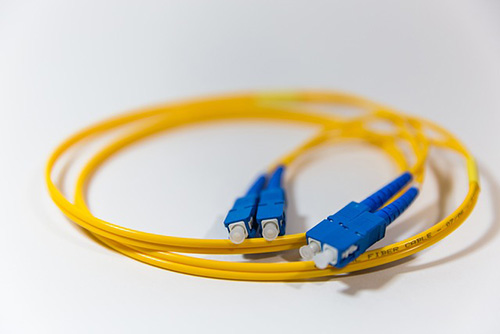There are obvious differences in the effective transmission distance between network cables (also known as copper cables) and optical fibers, which mainly depend on their physical characteristics and application environment. Optical fiber has longer effective transmission distance and lower signal attenuation, and is suitable for scenarios with long-distance communication and high bandwidth requirements. The transmission distance of network cables is relatively short and is suitable for local area networks and short-distance communications. The following are their typical effective transmission distances:

The effective transmission distance of Ethernet cables (such as Cat 5, Cat 6, Cat 7, etc.) is usually limited to within 100 meters. This is because the signal attenuation of the network cable will increase as the transmission distance increases. After it exceeds 100 meters, the signal attenuation will cause data loss or an increase in the bit error rate, thus affecting network performance and reliability. If you want to increase the transmission distance, a repeater can be installed between two sections of network cable, and up to 4 repeaters can be installed. If 4 repeaters are installed to connect 5 network cables, the maximum transmission distance can reach 500m.

The network cable transmission distance is limited to 100 meters mainly due to the following factors:
Although the network cable transmission distance is limited to 100 meters, other technical means can be used to expand network coverage, such as using repeaters, fiber optic converters, fiber optic connectors and other equipment to extend the transmission distance to meet the needs of specific application scenarios.
The transmission distance of optical fiber depends on many factors, including the quality of the optical fiber itself, the frequency of the optical signal, the use of optical amplifiers, and losses during transmission. Generally speaking, the transmission distance of optical fiber can reach tens of kilometers or even hundreds of kilometers. Here are some common fiber optic transmission distances:

It should be noted that the transmission distance of optical fiber will also be affected by the frequency of the optical signal, the quality of the optical fiber connection, environmental factors, etc. Therefore, in practical applications, comprehensive consideration and evaluation need to be carried out according to the specific situation.
| standard | type | Maximum transmission distance |
| 1000BASE-CX | Twinaxial shielded copper cable[3] | 25 meters |
| 1000BASE-KX | Backplane copper cable | 1 meter |
| 1000BASE-SX | multimode optical fiber | 220 meters - 550 meters (determined by the diameter and bandwidth of the fiber) |
| 1000BASE-LX | multimode optical fiber | 550 meters |
| single mode fiber | 5 kilometers | |
| 1000BASE-LX10 | Single mode fiber (using laser with wavelength 1310nm) | 10 kilometers |
| 1000BASE-EX | Single mode fiber (using laser with wavelength 1310nm) | More than 40 kilometers |
| 1000BASE-ZX | Single mode fiber (using laser with wavelength 1550nm) | More than 70 kilometers |
| 1000BASE-BX10 | Single-channel single-mode fiber (downstream uses a laser with a wavelength of 1490nm, and upstream uses a laser with a wavelength of 1310nm) | 10 kilometers |
| 1000BASE-T | Twisted pair (CAT-5/CAT-5e/CAT-6/CAT-7) | 100 metres |
| 1000BASE-TX | Twisted pair (CAT-6/CAT-7) | 100 metres |